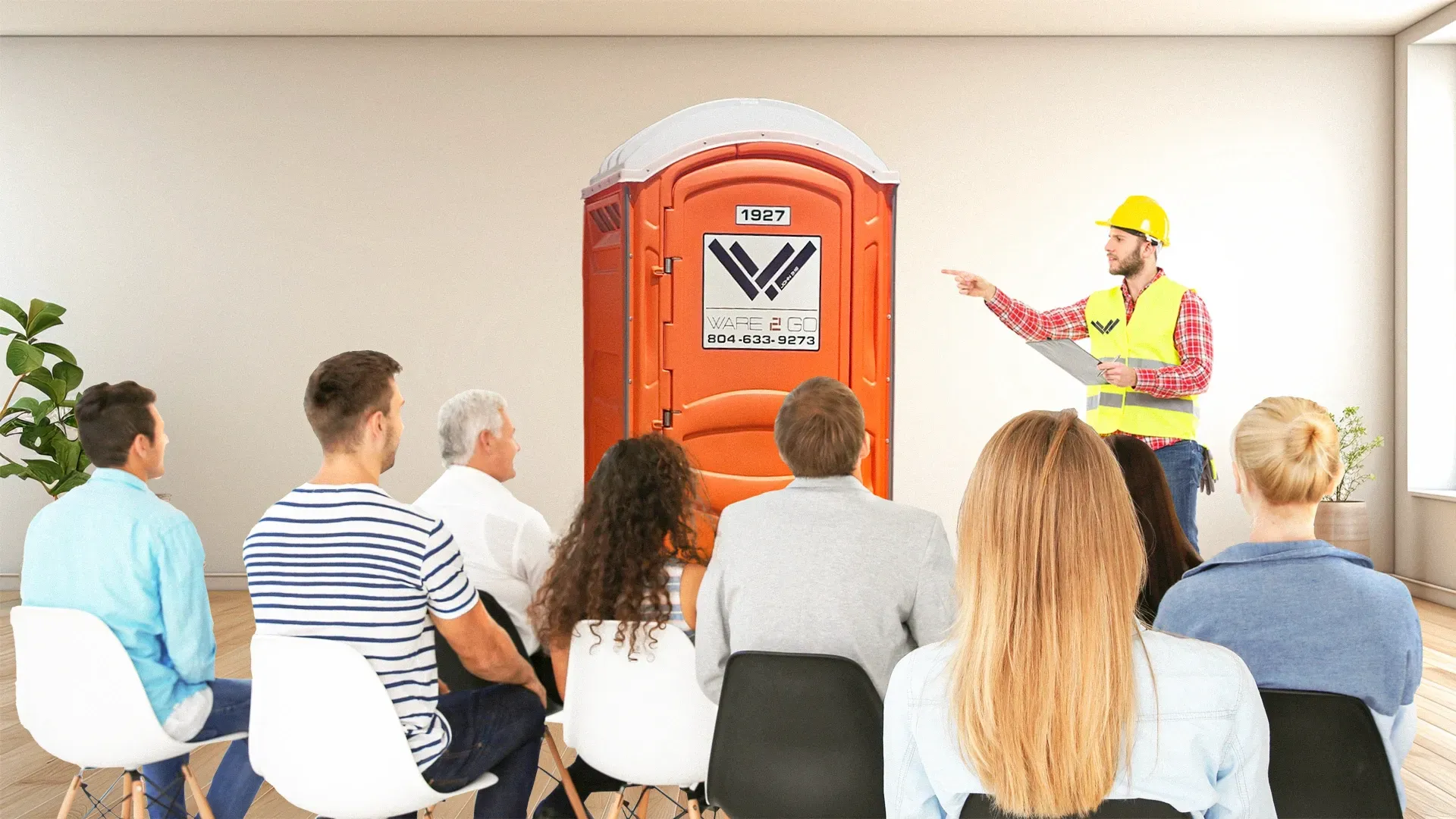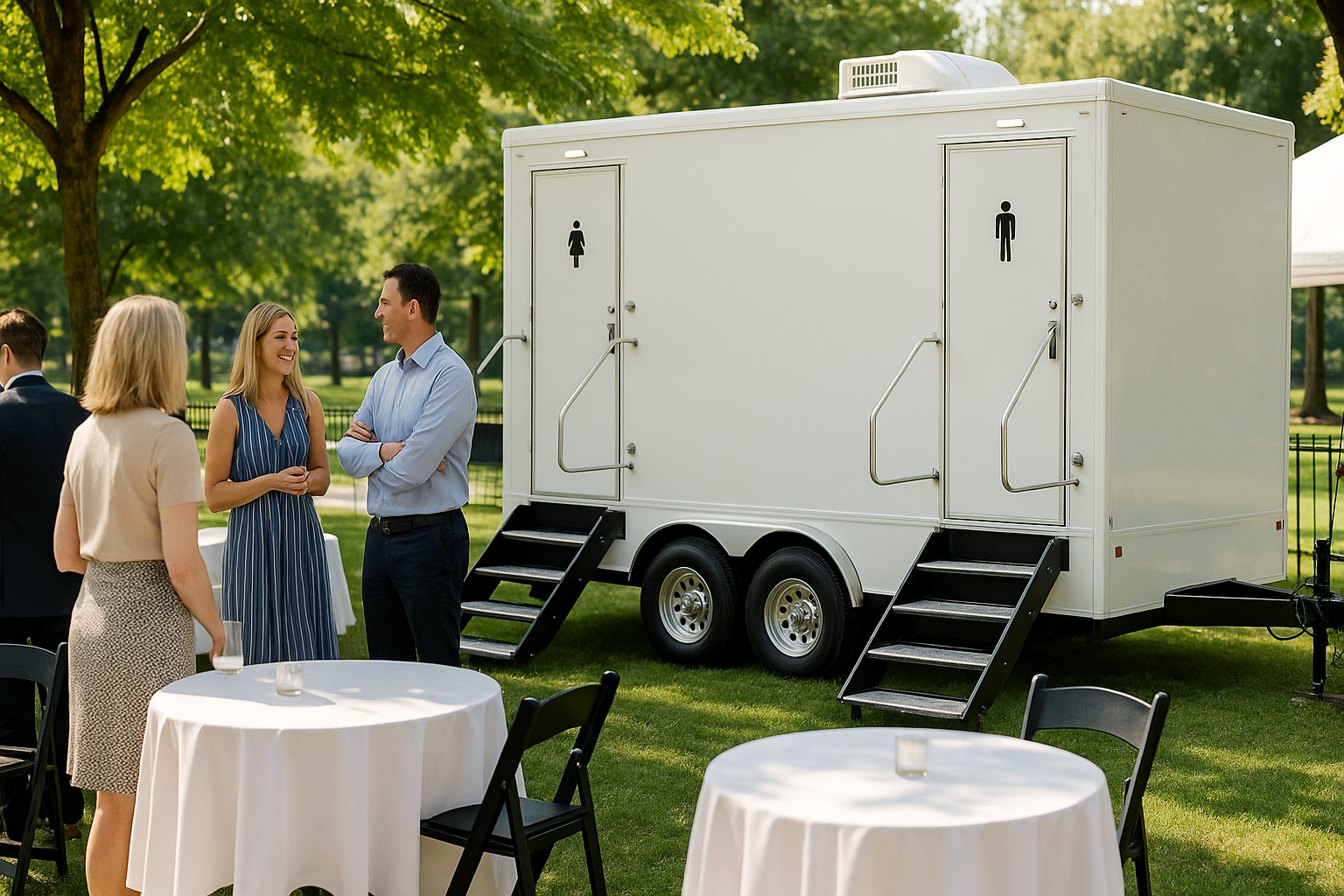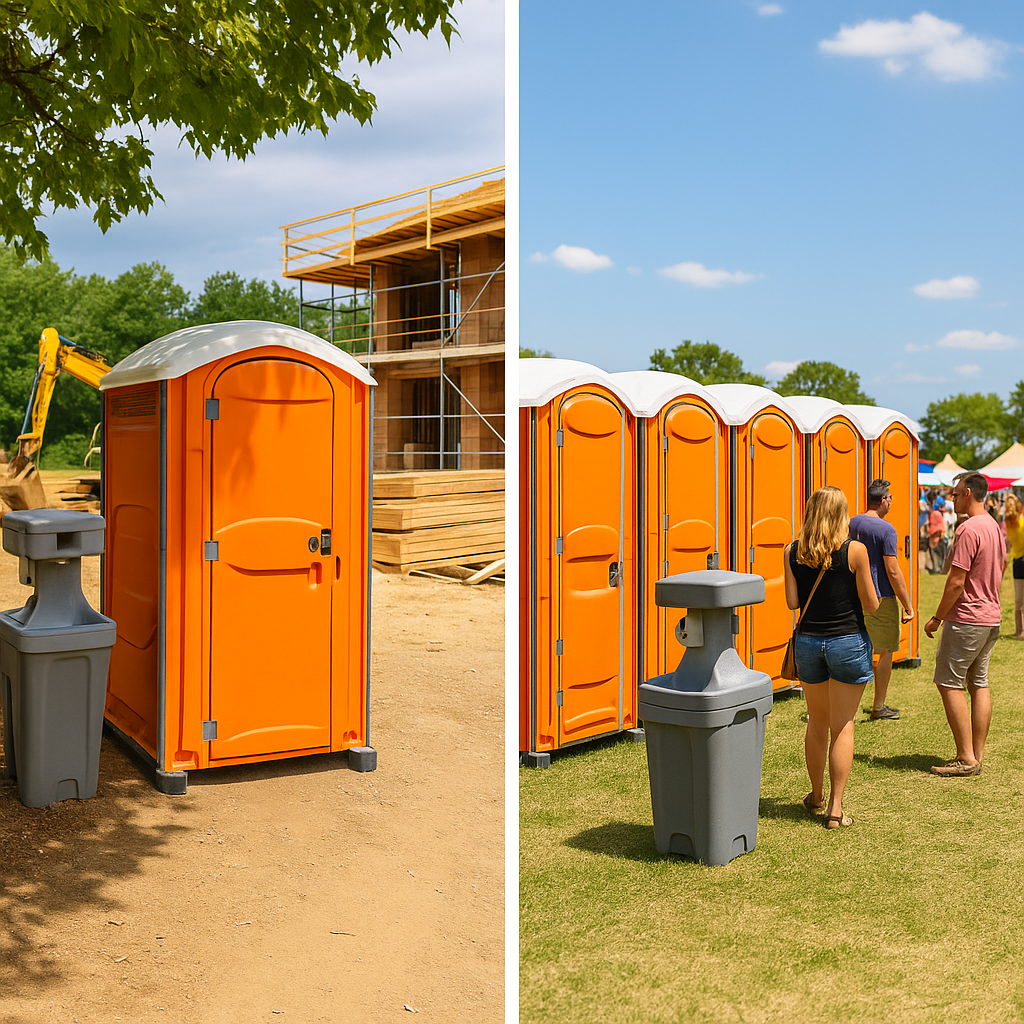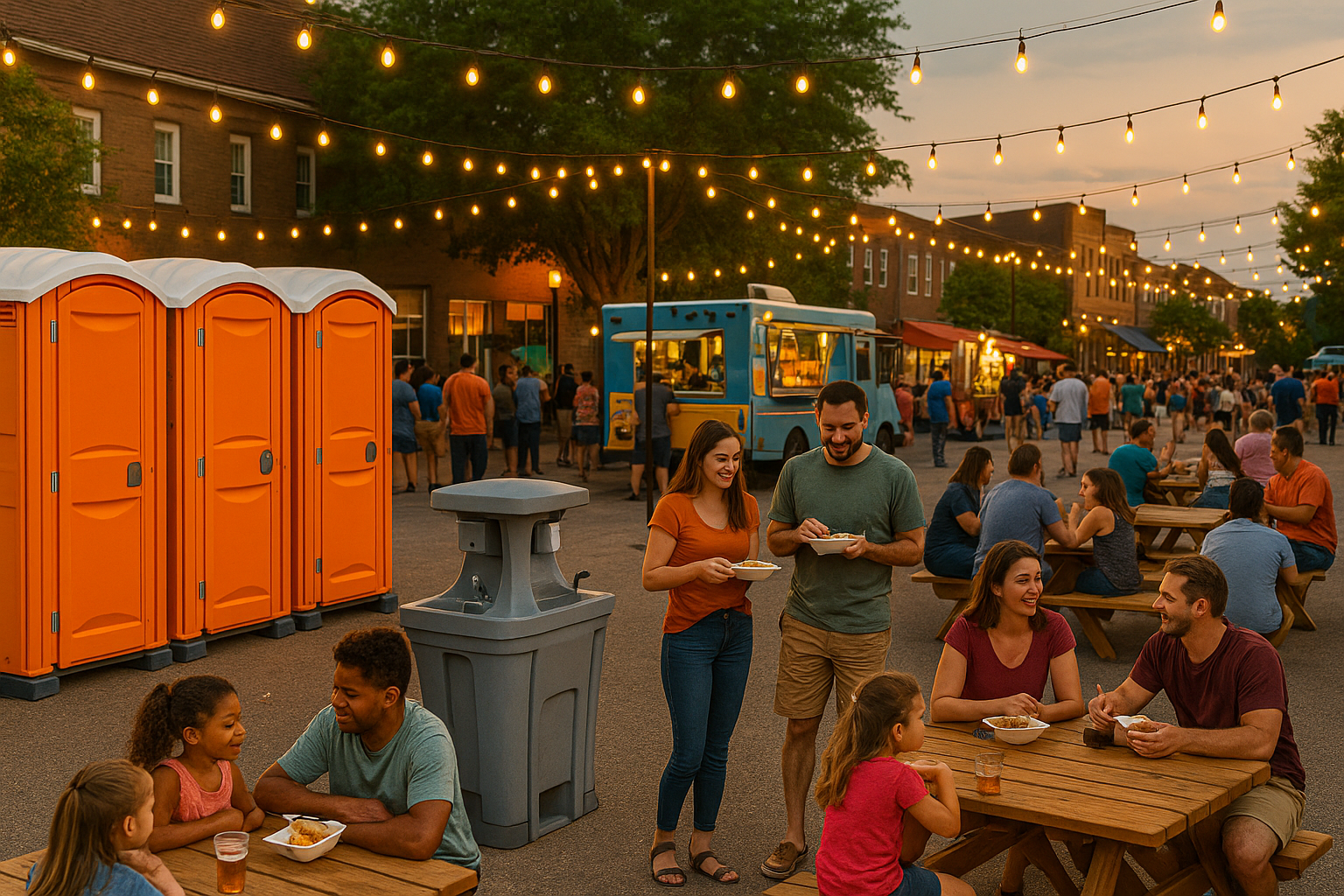
How Do Porta Potties Work? A Complete Expert Guide
November 19, 2024
In the wild world of construction zones, festival fields, and emergency sites, one unsung hero silently stands guard: the portable restroom. While they don’t exactly steal the spotlight, they’re mission-critical for keeping things clean, compliant, and—let’s be honest—more bearable.
If you've ever wondered how portable restrooms work or why they're at every major outdoor event, this guide will answer all your (possibly unspoken) questions.
What Are Portable Restrooms?
Portable restrooms—also known as porta-potties, mobile toilets, or chemical toilets—are self-contained units designed to provide sanitation in places where traditional plumbing is nonexistent. Think construction sites, music festivals, pop-up COVID testing centers, or post-hurricane relief zones.
They’re designed for portability, durability, and simplicity. Whether you're using a no-frills unit or a deluxe model with flushing capability, the purpose is the same: offer a clean and functional place to go when nature calls.
There are several types of portable restrooms:
- Standard Porta Potties – Basic and effective, often used on job sites.
- Deluxe Models – Equipped with flush systems, lighting, sinks, and ventilation.
- Handicap-Accessible Porta Potties– Spacious, accessible, and essential for inclusive event planning.
No matter the model, the end goal is consistent: provide a sanitary, efficient solution where traditional restrooms aren’t feasible.
How Portable Restrooms Work: Inside the Box
At first glance, a portable restroom looks like a simple plastic cube—but inside, it’s a smart blend of design and sanitation science. These portable toilets rely on gravity, chemical treatments, and ventilation systems to manage waste and control odors without the need for plumbing.
Here’s how it all comes together:
🚽 The Holding Tank: Waste Management Central
Beneath the toilet seat lies the holding tank, which is the real workhorse of any portable toilet. This sealed reservoir is designed to:
- Collect human waste
- Store it safely and discreetly
- Prevent leaks and contamination
Most tanks are built to handle 200–300 uses before needing to be pumped out, making them ideal for busy events or job sites. The dark, opaque design of the tank also helps limit visibility and sunlight, which reduces odor and bacterial growth.
🧪 Chemical Treatments: The Blue Stuff Explained
Ever noticed the bright blue liquid inside a porta potty? That’s not just colored water—it’s a chemical cocktail engineered for sanitation.
These chemicals:
- Break down solid waste
- Neutralize odors
- Kill harmful bacteria
As waste accumulates, the chemicals continue to work by masking odors and speeding up decomposition. Modern, eco-friendly formulations are also available, which minimize environmental impact without sacrificing effectiveness.
🌬️ Ventilation & Airflow: Odor Control in Action
Good airflow is key to keeping a porta potty tolerable—especially in the summer heat. Most units are equipped with:
- Vent pipes that direct odors outside
- Passive airflow systems that promote circulation
- Tightly sealed interiors to block outside contaminants
Together, these components help maintain a cleaner, more breathable space inside the unit—even during high-traffic use.
With a mix of gravity, chemistry, and thoughtful design, portable restrooms manage to stay surprisingly fresh and functional in the field. But what about all the different types available?
Types of Portable Restrooms: One Size Doesn’t Fit All
Portable restrooms have come a long way from the basic blue box. Depending on the setting—be it a rugged construction site or a high-end wedding—there’s a unit designed to meet your exact needs. Let’s break down the most common types.
🚫 Waterless Portable Restrooms
These are your classic porta-potties. They’re simple, efficient, and cost-effective—no plumbing or power needed.
How They Work:
Waste drops directly into the holding tank, where it’s treated by chemical agents. There’s no flush mechanism—just gravity, chemical breakdown, and a ventilation pipe to manage odors.
Pros:
- Low-cost rental and maintenance
- No water or power required
- Ideal for short-term or high-volume use
Cons:
- More susceptible to lingering odors
- Perceived as “less clean” without a flush
Best for:
Construction sites, day-long events, disaster zones, and remote areas.
💦 Flushable Portable Restrooms
These are a step up, offering a more familiar restroom experience with a manual or battery-powered flush mechanism.
How They Work:
A fresh water tank and pump system allow users to flush waste into the holding tank below. Some even include hands-free flushing and upgraded ventilation systems.
Pros:
- Improved odor control
- Cleaner, more comfortable experience
- More appealing for guests or long-term use
Cons:
- Requires regular water refills
- Higher rental and servicing cost
Best for:
Weddings, VIP areas at events, corporate functions, and longer-term job sites.
🚽 Want Even More Luxury?
Portable restrooms can get seriously fancy. Think:
- Climate-controlled trailers
- Flushing toilets with sinks
- Lighting, mirrors, and music
These luxury restroom trailers can transform any event into a five-star experience. If you’re planning something upscale, they’re worth every penny.
📌For tips on choosing high-end options for weddings or events, check out this guide to luxury restroom trailers.
Hygiene, Sanitation & Maintenance: What Keeps Them Fresh?
Let’s be real—portable restrooms get a bad rap. But with the right setup and regular maintenance, these units can be surprisingly clean and sanitary. Here’s how.
🧼 Built-In Hygiene Features
Modern portable restrooms often come equipped with:
- Hand sanitizer dispensers
- Foot-pump sinks for hands-free washing
- Soap dispensers and paper towels
- Antibacterial toilet seats (yes, that’s a thing!)
Why does this matter? Because in high-traffic environments like festivals or worksites, germ control is everything.
📌For sanitation guidance, the CDC offers solid advice on cleaning and disinfecting shared facilities.
🔁 Regular Servicing: The Unsung Hero
Without regular maintenance, even the fanciest restroom can go downhill fast. That’s why reputable portable restroom providers follow a strict servicing schedule.
Typical servicing includes:
- Pumping out the holding tank
- Replacing chemical treatments
- Washing down the entire interior
- Restocking toilet paper, hand sanitizer, and other supplies
Depending on usage, servicing might happen every 1–7 days. For example, OSHA recommends minimum sanitation standards for job sites, which you can read about here.
♻️ Eco-Friendly Options
Here’s a fun fact: Portable restrooms actually conserve water—flushing toilets can use up to 1.6 gallons per flush, while a porta potty uses none.
But what about those bright blue chemicals? Good news: many companies now use biodegradable, formaldehyde-free solutions that are safe for humans and the environment.
Waste is typically processed at certified wastewater treatment plants, making the entire cycle more eco-friendly than you might think. For more on this, check out the EPA’s wastewater management guidance.
Where Do You Actually Use These Things?
You’ve probably seen porta potties in the wild—lined up at concerts or tucked behind a jobsite fence—but their uses go far beyond the obvious. Let’s break it down.
🏗️ 1. Construction Sites
No plumbing? No problem.
Construction sites are where portable restrooms shine. Crews need reliable access to restrooms throughout the day, and porta potties keep projects compliant with OSHA’s sanitation standards while avoiding costly plumbing infrastructure.
💡Bonus tip: One portable toilet is generally required for every 10 workers over a 40-hour work week.
🎪 2. Outdoor Events & Festivals
Whether it’s a weekend music fest, a neighborhood fair, or a 300-guest wedding, portable restrooms keep the crowd happy and the ground dry.
Upscale events? Consider luxury restroom trailers with climate control, mirrors, and even Bluetooth sound systems. It's sanitation—with style.
🌪️ 3. Emergency & Disaster Relief
In the wake of hurricanes, wildfires, or other natural disasters, permanent restrooms may be out of commission. That’s where portable restrooms step in to support public health and restore a sense of normalcy.
Organizations like FEMA rely on portable sanitation in relief zones to maintain hygiene and dignity for displaced residents and responders.
How to Choose the Right Portable Restroom
Picking the right portable toilet is about more than cost. Ask yourself:
- Location: Is it a construction site or a high-end event?
- Expected Use: How many people will be using it per day?
- Duration: One weekend? Several months?
For large events or job sites, you may need multiple portable toilets or frequent servicing. And if accessibility is a concern (spoiler: it should be), make sure to include handicap-accessible porta potties.
Debunking Porta Potty Myths (Let’s Clear the Air)
Let’s face it—portable restrooms get a bad rap. But most of the horror stories are rooted in outdated models and lackluster maintenance. Modern portable restrooms are:
- Well-ventilated
- Regularly serviced
- Outfitted with odor-neutralizing chemicals
- Available in clean, high-end options
So no, they’re not all hot, smelly boxes of doom. With proper upkeep, they’re actually surprisingly comfortable.
Final Thoughts: The Unsung Hero of Public Sanitation
Portable restrooms aren’t glamorous, but they’re vital. Whether you’re laying down concrete, dancing at a festival, or rebuilding after a storm, these portable toilets quietly support comfort, cleanliness, and dignity.
The next time you step inside one, tip your (hard) hat to the smart design, thoughtful maintenance, and all-around convenience packed into that little blue booth.
Contact WARE2GO Site Services Today!
Need portable restrooms that don’t stink—literally or figuratively?
📞
Call us today at
804-633-9273
or
🌐 Explore our
full service
offerings
Whether you’re hosting a single-day event or managing a long-term project, WARE2GO Site Services delivers clean, reliable, and comfortable restroom solutions that keep your crew (and guests) happy.
How do portable restrooms work without plumbing?
Portable restrooms use a sealed holding tank to collect waste, combined with chemical solutions that break down solids and control odors. No plumbing or sewer connection is required.
What chemicals are used in portable toilets to control odor?
Most portable toilets use blue deodorizing chemicals that neutralize smells, kill bacteria, and help break down waste. Many modern solutions are also biodegradable and eco-friendly.
How often should portable restrooms be cleaned or serviced?
Portable restrooms should be cleaned and serviced at least once a week, or more frequently for high-traffic areas. Regular servicing includes pumping waste, refilling chemicals, and sanitizing surfaces.
Are there environmentally friendly portable restroom options?
Yes! Many portable restroom providers now offer eco-friendly models that use biodegradable chemicals and reduce water usage, making them more sustainable for long-term use.
What types of portable restrooms are best for events vs. job sites?
Basic, waterless units are ideal for construction sites. For events like weddings or festivals, flushable or luxury restroom trailers offer a cleaner and more comfortable experience.
Tap to share!
Latest Posts







